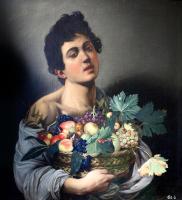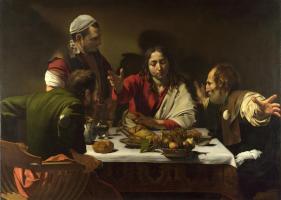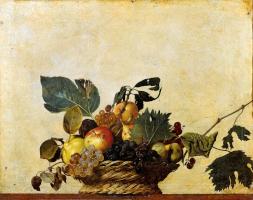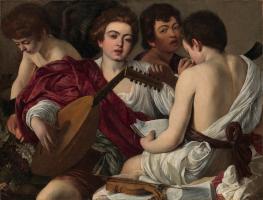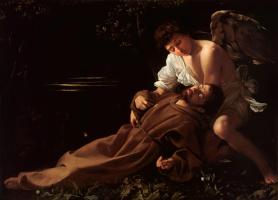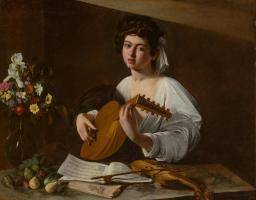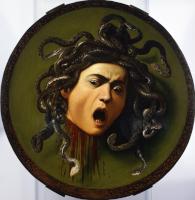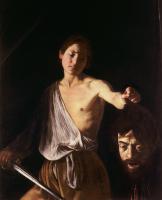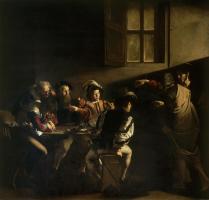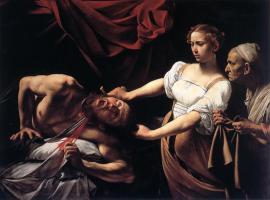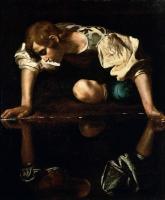Caravaggio
Caravaggio was a stormy and excitable man, and his tempestuous life was surrounded by controversy. He stabbed a man to death after a violent quarrel in Rome, was imprisoned, but escaped and fled to Sicily. From there he was pursued to Naples and nearly murdered in a brawl with a group of cut-throat mercenaries.
The vivid and sensational quality of his temperament is reflected in his art. People were shocked by his work, but it was widely admired and extremely influential. When he died at the age of thirty-seven he was generally recognized as one of the most exciting painters and innovators of the Baroque age.
In particular his use of chiaroscuro (strong light contrasted with deep shadow) and dramatic foreshortening are the characteristics of his work for which he is best known. His technical methods were unusual for the sixteenth century: he painted directly on to canvas instead of working from sketches and squared-up drawings in the accepted fashion, and this gave his style a remarkable zest.
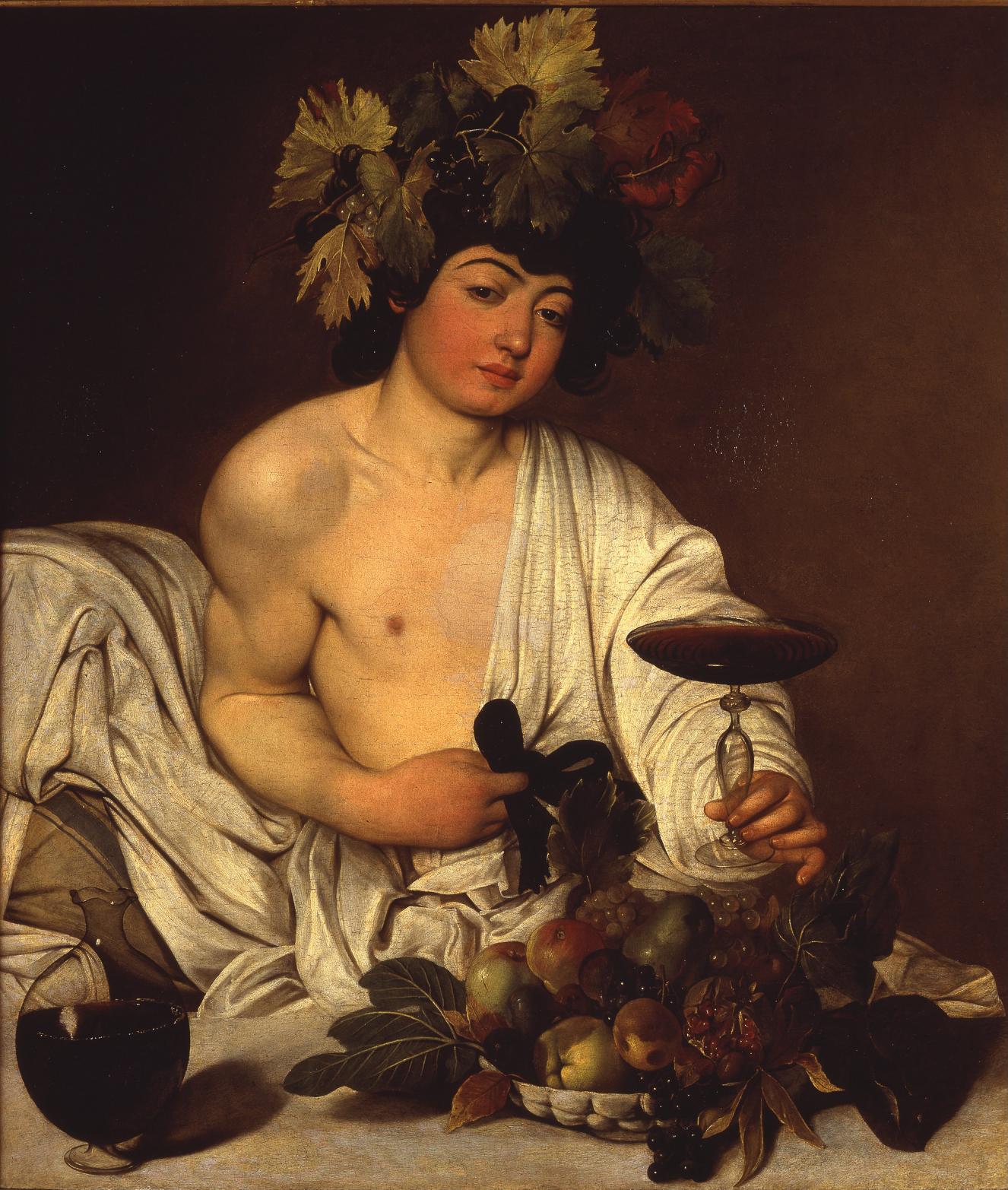 Bacchus was the god of wine and fertility, and he was a common subject in
paintings of the period. This portrayal of him, executed when Caravaggio was
barely twenty years old, may well be a self-portrait; and the young god in his
crown of grapes and vine leaves certainly has some of the artist’s passion and
vitality in his gaze. Although his pose is indolent and relaxed he has an air
of repressed energy.
Bacchus was the god of wine and fertility, and he was a common subject in
paintings of the period. This portrayal of him, executed when Caravaggio was
barely twenty years old, may well be a self-portrait; and the young god in his
crown of grapes and vine leaves certainly has some of the artist’s passion and
vitality in his gaze. Although his pose is indolent and relaxed he has an air
of repressed energy.
His foreshortened arm is thrust forward so that it breaks the flat surface of the painting and draws us in towards him. It is a powerful pose, and its directness is very arresting. A strong light silhouettes his figure against the dark background, and this chiaroscuro device heightens the effect of his gesture. The bowl of fruit and carafe of wine underline his sensuality and the mood of indulgence. Bacchus is a superb example of the effects of lighting, foreshortening and vivid realism achieved by Caravaggio.
 The gestures in this painting tell us a great deal. The outstretched hand of
the disciple on the right, and those of the others gripping his chair, capture
the immediate moment of recognition, as the beardless youth they met along the
road reveals himself to be the resurrected Christ by blessing the meal. The
still life of fruit makes biblical references to restored life and expectations
fulfilled, whilst the apples — symbols of temptation — remain noticeably
blighted.
The gestures in this painting tell us a great deal. The outstretched hand of
the disciple on the right, and those of the others gripping his chair, capture
the immediate moment of recognition, as the beardless youth they met along the
road reveals himself to be the resurrected Christ by blessing the meal. The
still life of fruit makes biblical references to restored life and expectations
fulfilled, whilst the apples — symbols of temptation — remain noticeably
blighted.

